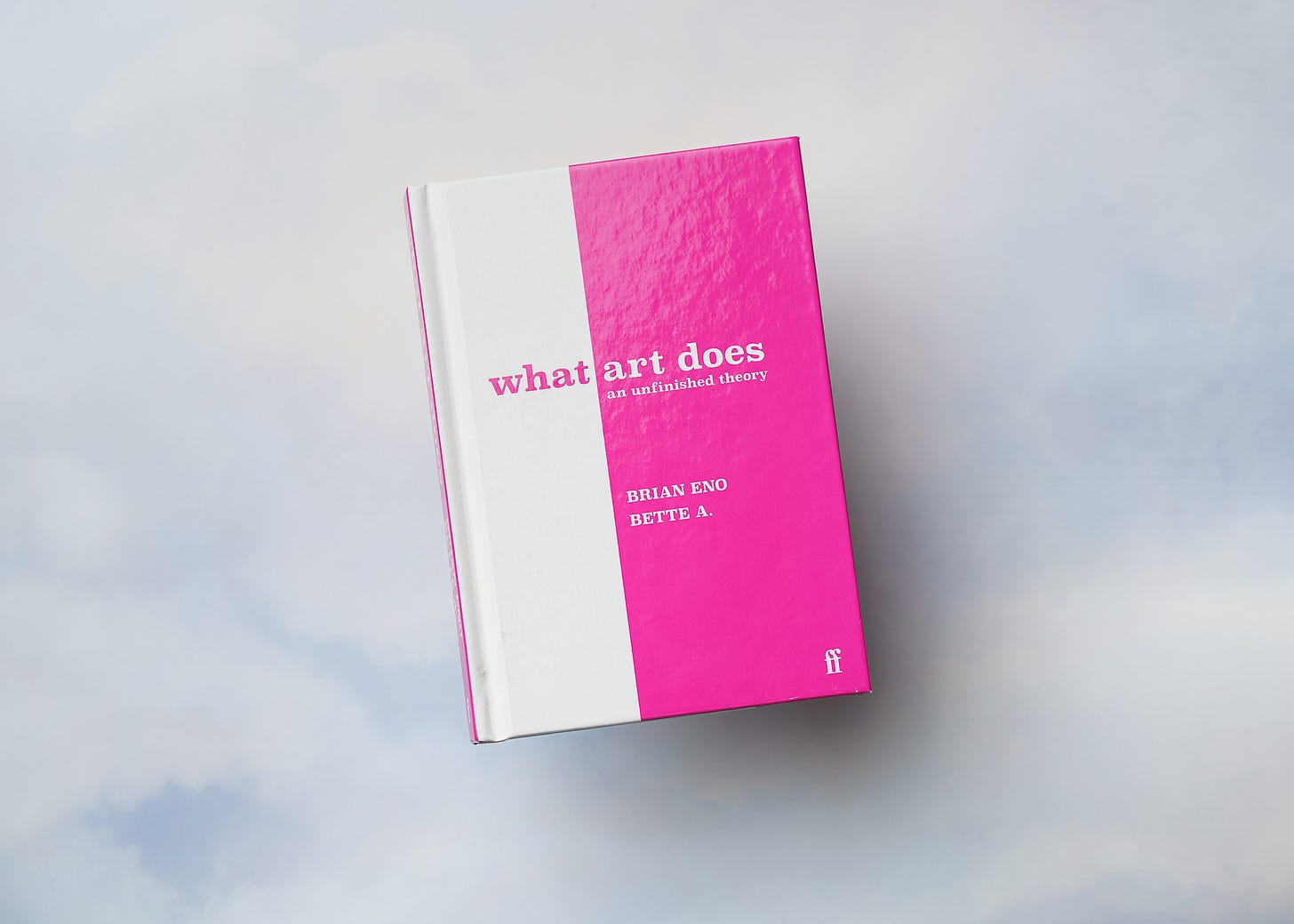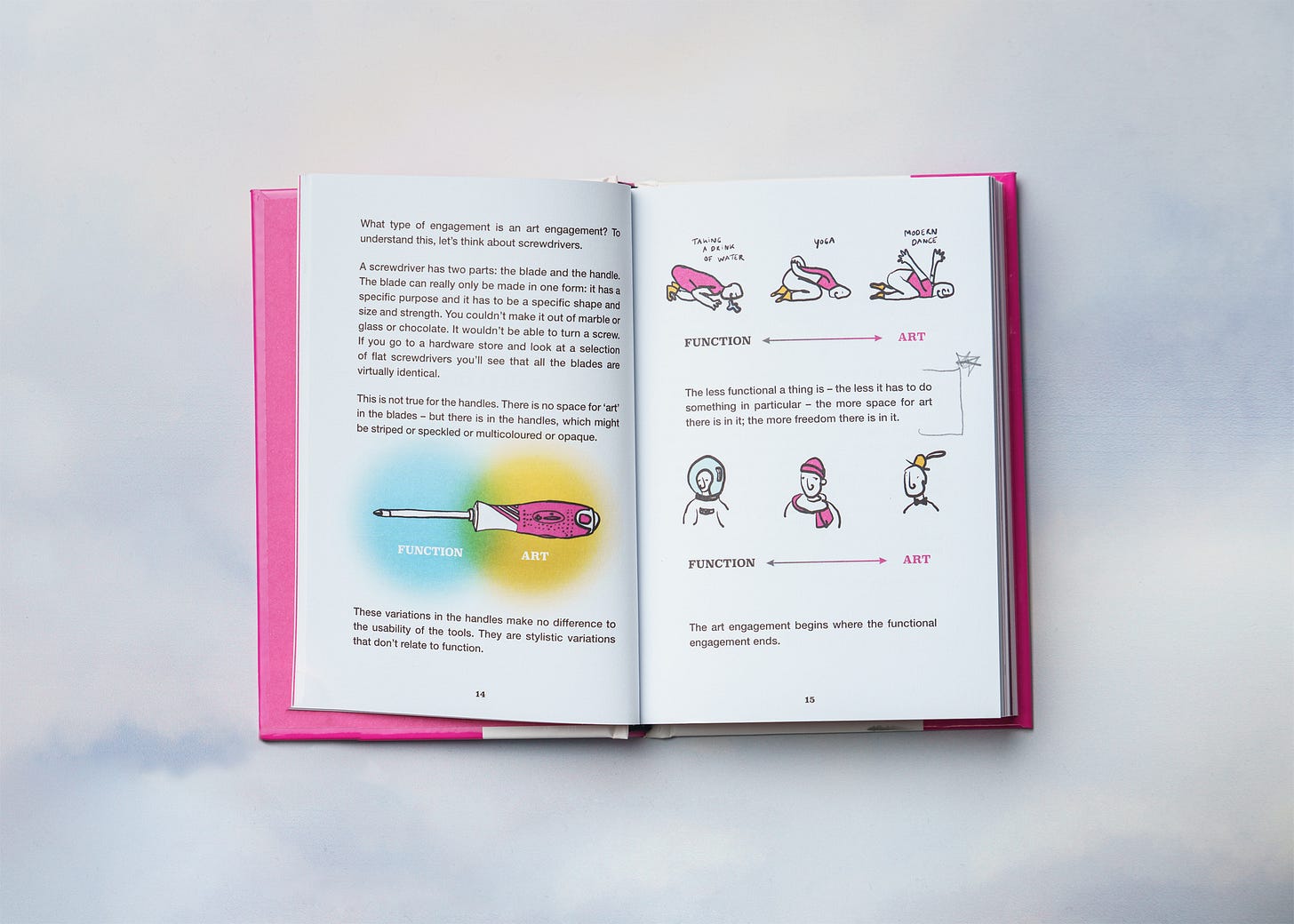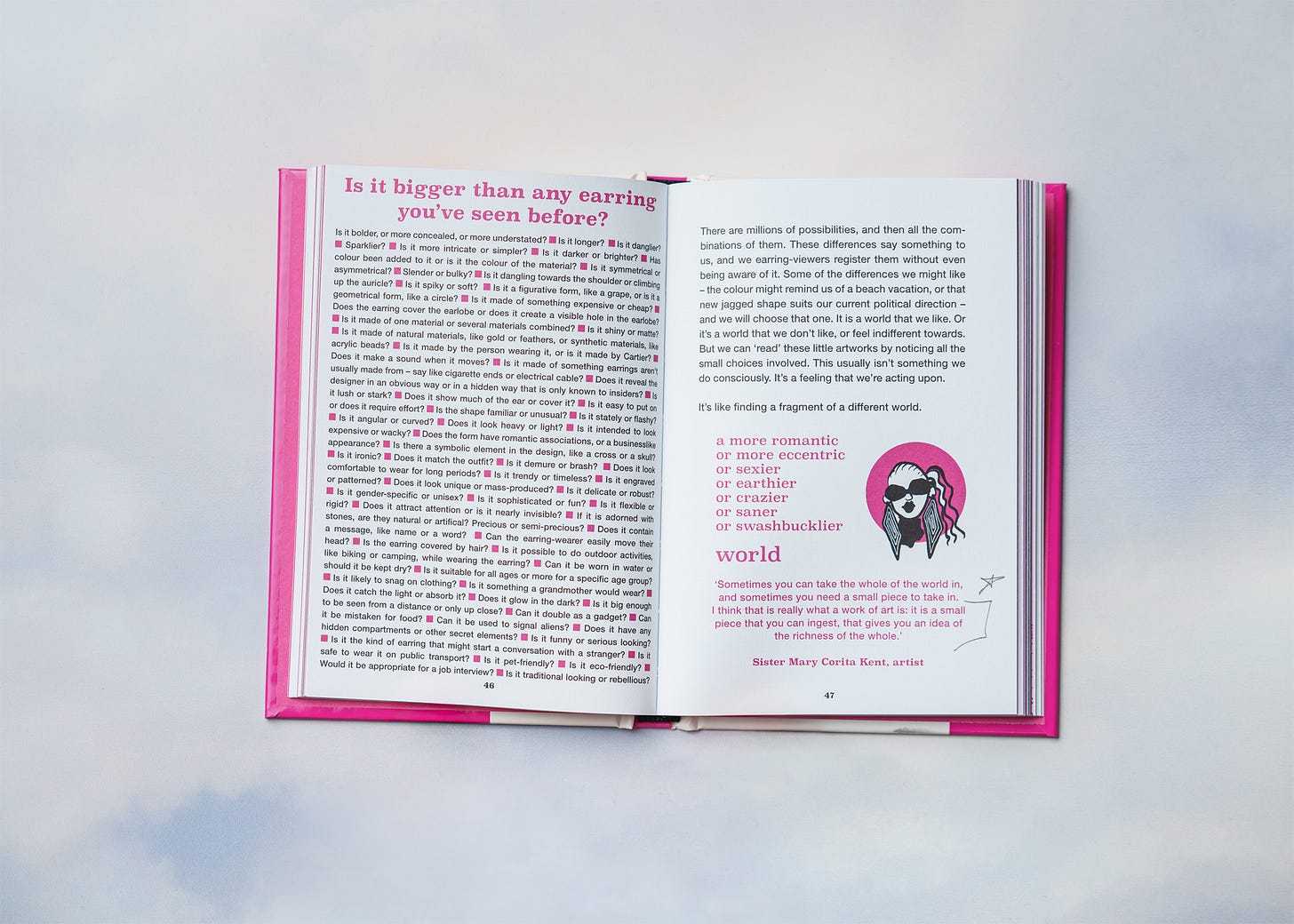What does art do? What purpose does it serve? Why is it important?
These questions aren’t nearly as popular as “What is art?” but I think they’re considerably more interesting.
Oscar Wilde said art is useless. I’ve always liked that definition, which is not the same as saying art has no value. “Use” in this context is a practical term. A frying pan is useful. A screwdriver is useful. The instructions for putting together a Järvfjället are useful. These things are not art. They have utility. Art is free to be anything other than utilitarian.
Fairly recently — likely after my time spent with Rick Rubin’s The Creative Act — I settled on the idea that art is in the eye of the creator. It’s art if I say it’s art. Marcel Duchamp would be proud.
So that’s settled. But, what does art do?
A new book from the ever-inspiring British artist/musician/activist Brian Eno and Dutch artist/author/educator Bette A. aims to answer (mostly) this question.
The book is small — in stature (palm-sized) and length (under 10,000 words) — but mighty. Perhaps it’s my mindset of perpetual openness for books like this, but I find my receptiveness to creative thinking/instruction correlates directly to how inspired I find the work. In this case, I quite appreciate the perspectives this tiny tome imparts.
The chief question the authors pose is why do we make art. Does it serve a purpose? If so, is that useful? It must be, right? Simply because we humans have so perpetually created art. Why would we do it if it had no purpose?
“Why does every culture spend such a large part of its free time in made up worlds,” the authors ask, “like books, plays, paintings, dances, movies, self-decoration, stories and songs — all the things we might call art? What are we doing there? Why did humanity develop them, and why do we value them?”
The book — an “unfinished theory,” it says right there on the cover — attempts to begin to think about maybe potentially answering this question. But I think that’s plenty. Frankly, I just like considering what art does.
“When we speak of an art object we mean ‘something that is intended to trigger some feelings,’” the authors posit. “Art is not a substance that radiates out of paintings or symphonies. Art is a name we give to a certain type of experience. It’s the name for a kind of engagement we have with something.”
Okay, now we’re getting somewhere. This really resonates. Art is a way of being, or so I’ve heard, so perhaps it’s also a way of receiving something like a feeling, a thought, a mood. This also dovetails nicely with my hypothesis that art is what I say it is.
“The less functional a thing is — the less it has to do something in particular — the more space for art there is in it; the more freedom there is in it.”
When I’m on an assignment for a client, when I’ve been provided a brief that includes the expected outcomes of a photograph, the color scheme, the vibe, the purpose… Am I making art? No, I’m not. At least I don’t feel like I am. I’m using art skills, art tools, art ideas to create a purposefully useful object, a commercial photograph. There may be room for hints of art to peek through, and I may elevate it to such a level that viewers and clients alike proclaim it to be a work of art, but deep down, I know the truth. I know art and that ain’t it.
Funny enough, this thing you’re reading right now, I think of this as my art. It is free to be whatever I make it. And I’m certainly not doing what anybody tells me. It’s art because I say it’s art. Even if there’s proper punctuation and never any mispelings.
“The more specific the job, the less room for art.”
The screwdriver is a wonderful example of what is and isn’t art. The business end… zero art. The handle, however, these come in many colors and textures, shapes, sizes and materials. This end still has a bit of a job to do (providing leverage and grip) but there’s room for art, too. So the makers of screwdrivers add a little or a lot of art.
“Art is a way of making feelings happen.”
Now this idea really hits home. There are works of art that deliver me a visceral feeling I can’t describe. Michael McMillen’s Central Meridian and Janet Cardiff’s Taking Pictures are prime examples. I don’t have a name for that feeling — joy? wonder? — but I think the best name is simply “Art.”
When I interviewed the artist Caleb Charland he referred to the space between experiencing something and understanding as “the wonder gap.” Some of my favorite art exists there, perpetually, creating this feeling that I can’t quite describe. Nothing but art does that for me.
Eno and Bette A. quote the artist Sister Mary Corita Kent: “Sometimes you can take the whole of the world in, and sometimes you need a small piece to take in. I think that is really what a work of art is: it is a small piece that you can ingest, that gives you an idea of the richness of the whole.”
Sometimes it’s enough that the work of art delivers a feeling we appreciate. Good or bad, it’s something unusual, out of the ordinary, and we want to feel it again. Simple.
“We look for how this artwork chooses to be different from what came before,” they write. “It’s more jagged, or it’s more soft, or it’s more detailed, or it’s less detailed, or it tastes saltier, it smells muskier, it sounds rougher, it feels stickier. Somehow or another, the message is: ‘This is a difference that feels interesting today.’”
Drawing a parallel to the way children explore the world and expand their minds through play, the authors suggest perhaps one thing that art does is allow us to learn in a way we haven’t since childhood.
“Here is a proposal,” they write: “art is how adults play.”
“What we need is already inside us. And that art — playing and feeling — is a way of discovering it.”








Photo is more than a textual message. Closer to subliminal charm. I recall a shot I did for Clorox of 5 different sizes of Pine Sol. The order, spacing, altitude, perspective, and framing along normal product shot lines. However, when you looked at it, you saw a family; Ma. Pa, Uncle Bert, Ted, and Lil' Sis. You could feel it. I did a shot of one of the first satellite residential Electricity Meters. Can o' corn? No. Tilted, chin up it; was smiling at you.
I have no idea what art is but I will own my work as craft. Part of the craft is touching places in peoples' minds.
I think art comes from practical origins Whether perhaps magical for maybe hunting a bison, making houses to live in, pots to keep water in, etc to become later unattached from purpose 🤨🖼️